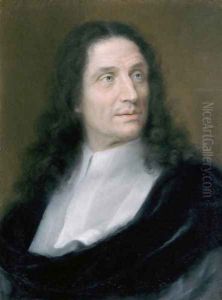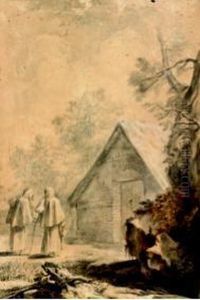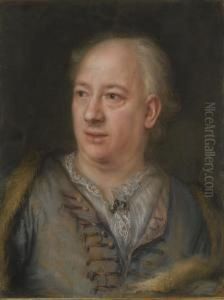Domenico Tempesti Paintings
Domenico Tempesti was an Italian painter of the Baroque period, born in 1652 in Pisa, Italy. His artistic journey is emblematic of the Baroque's rich and dynamic approach to art, characterized by dramatic intensity, emotional depth, and a keen interest in capturing movement and light. Tempesti's work, although not as widely recognized as some of his contemporaries, remains an important testament to the Baroque's artistic achievements and innovations.
Tempesti's early life was steeped in the artistic traditions of his native Tuscany. He trained under the guidance of notable artists of his time, which allowed him to develop a profound understanding of both the technical and theoretical aspects of painting. His style was significantly influenced by the dramatic chiaroscuro of Caravaggio and the dynamic compositions of Pietro da Cortona. Tempesti's ability to fuse these influences with his unique vision and technique contributed to the development of his distinctive artistic voice.
Throughout his career, Tempesti worked on a variety of commissions, including altarpieces, frescoes, and private devotional paintings. His works are characterized by their vigorous dynamism, a rich palette, and meticulous attention to detail. One of his most notable contributions to the art world was his involvement in the decoration of several churches and public buildings in Pisa and its surrounding regions, where his frescoes and altarpieces continue to be admired for their beauty and emotional power.
Despite his accomplishments, Domenico Tempesti's name is often overshadowed by the more famous artists of his era. However, his work plays a crucial role in the history of Italian Baroque painting, embodying the period's aesthetic ideals and its continuous quest for artistic expression. Tempesti's legacy is preserved in the collections of various museums and churches across Italy, where his paintings continue to captivate viewers with their dramatic intensity and emotional depth.
Domenico Tempesti passed away in 1718 in Pisa, leaving behind a body of work that, while not as widely celebrated as that of some of his peers, remains an essential part of the Baroque artistic heritage. His contributions to the Italian Baroque movement continue to be studied and appreciated for their artistic value and their role in the broader context of 17th-century European art.


